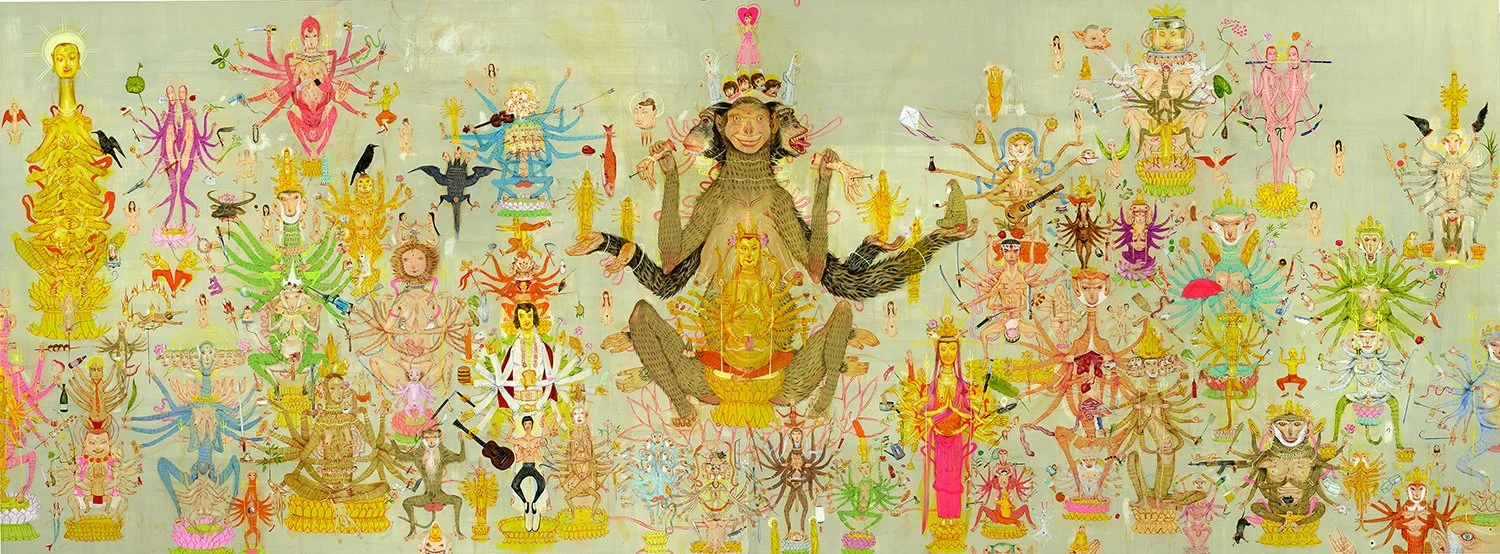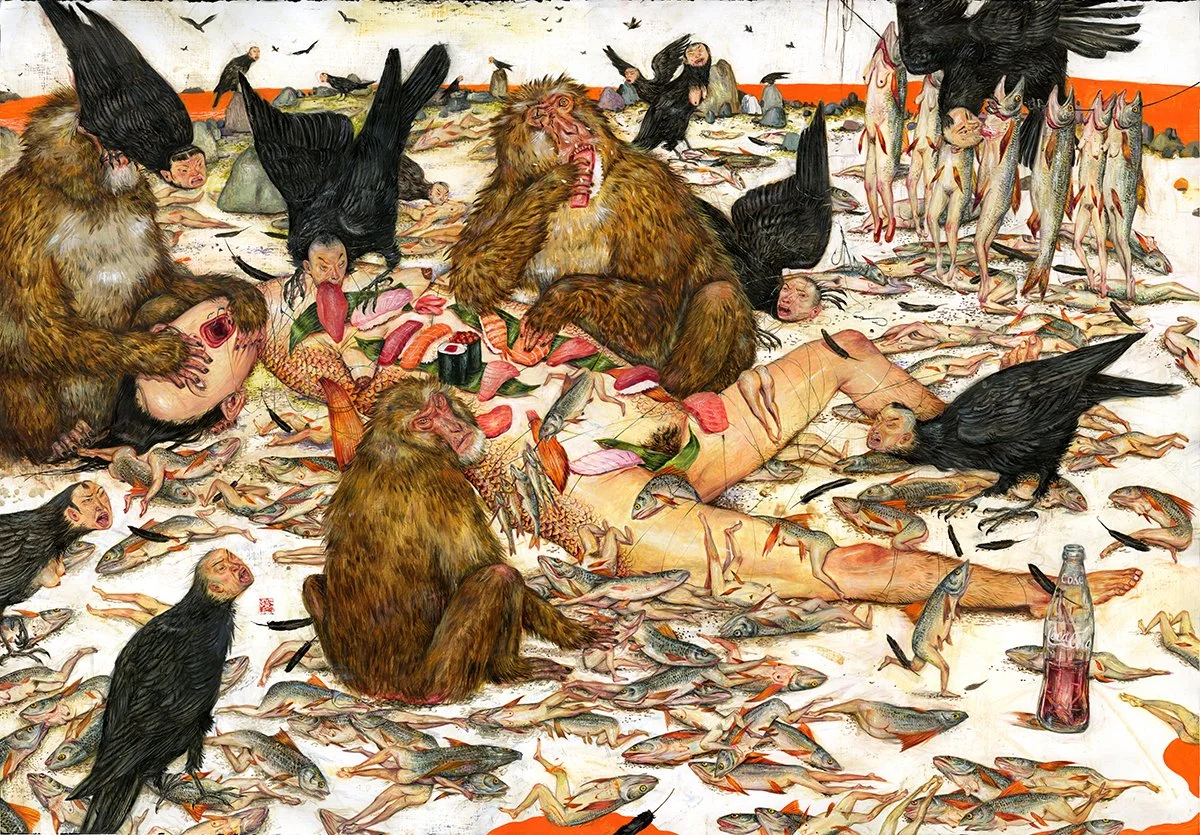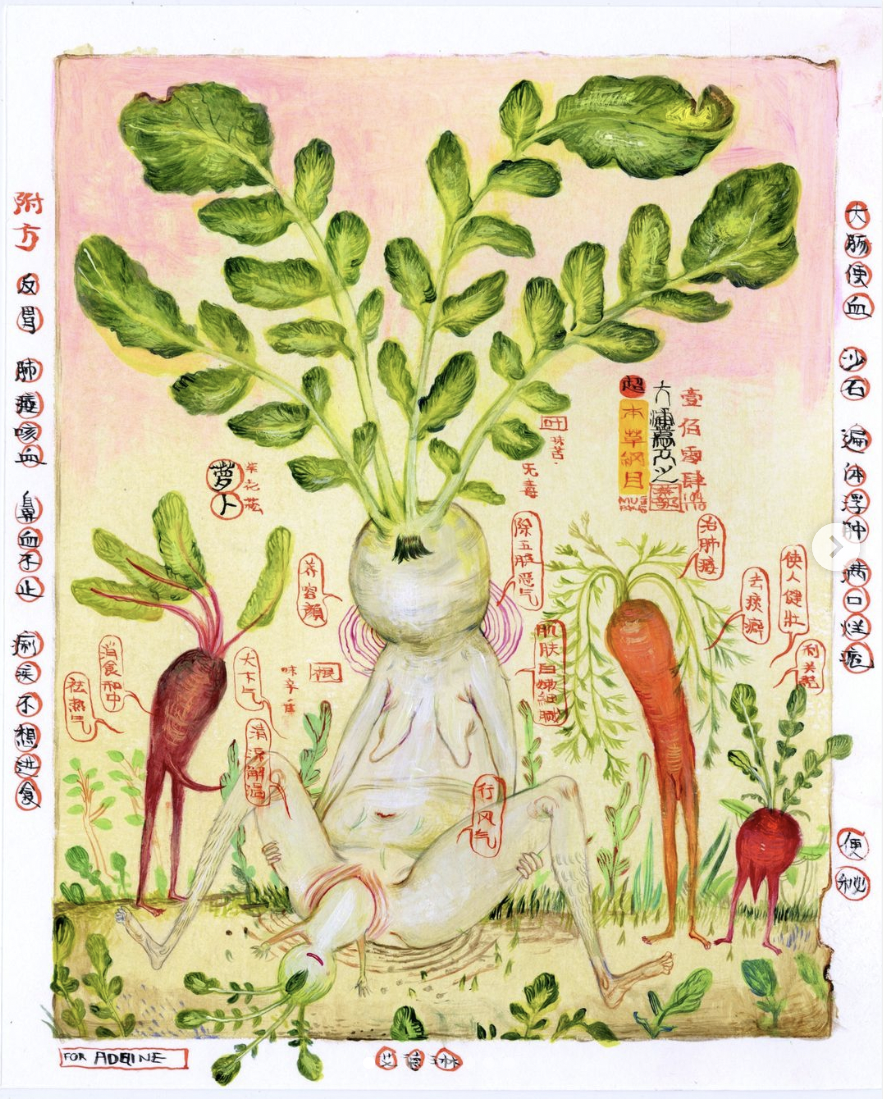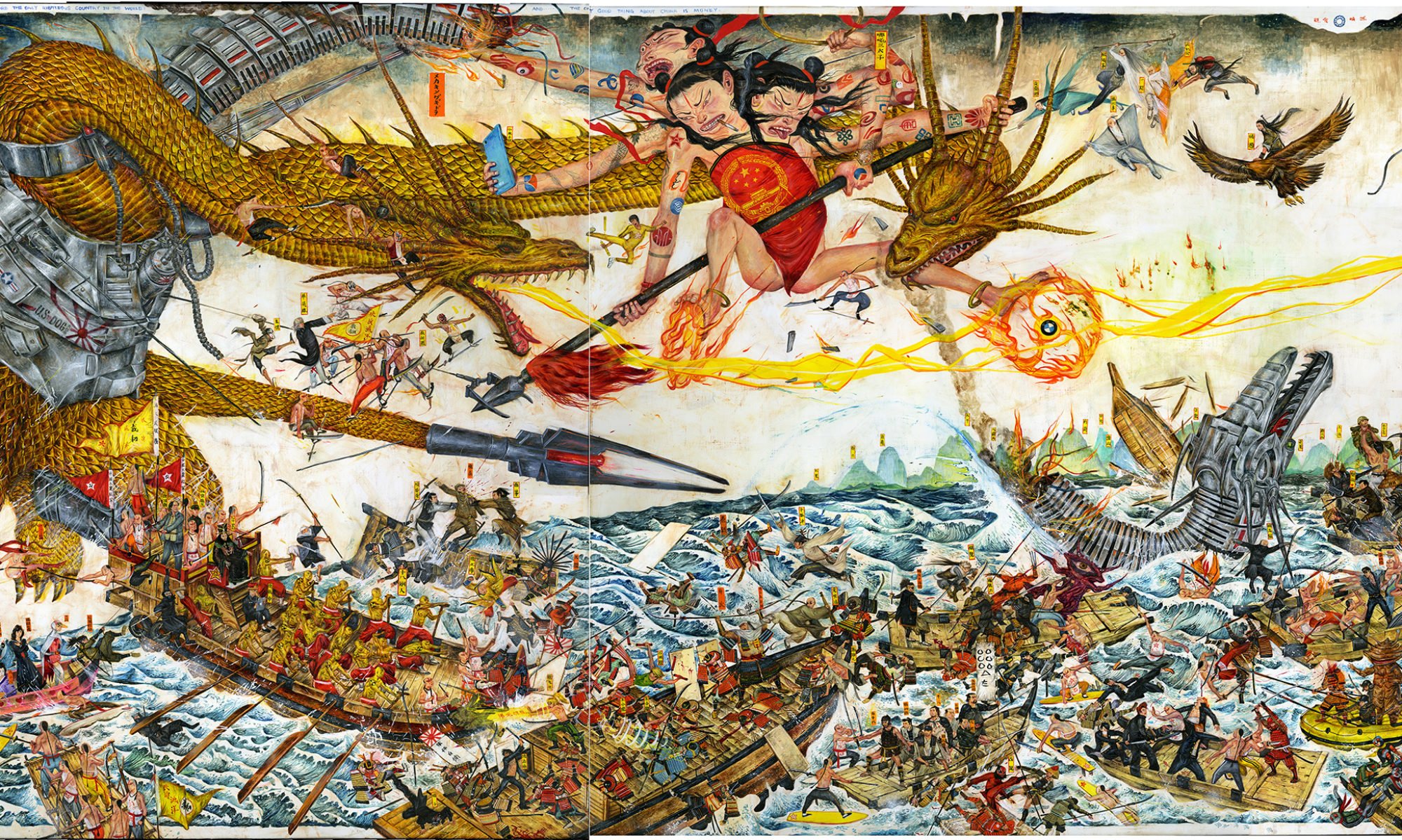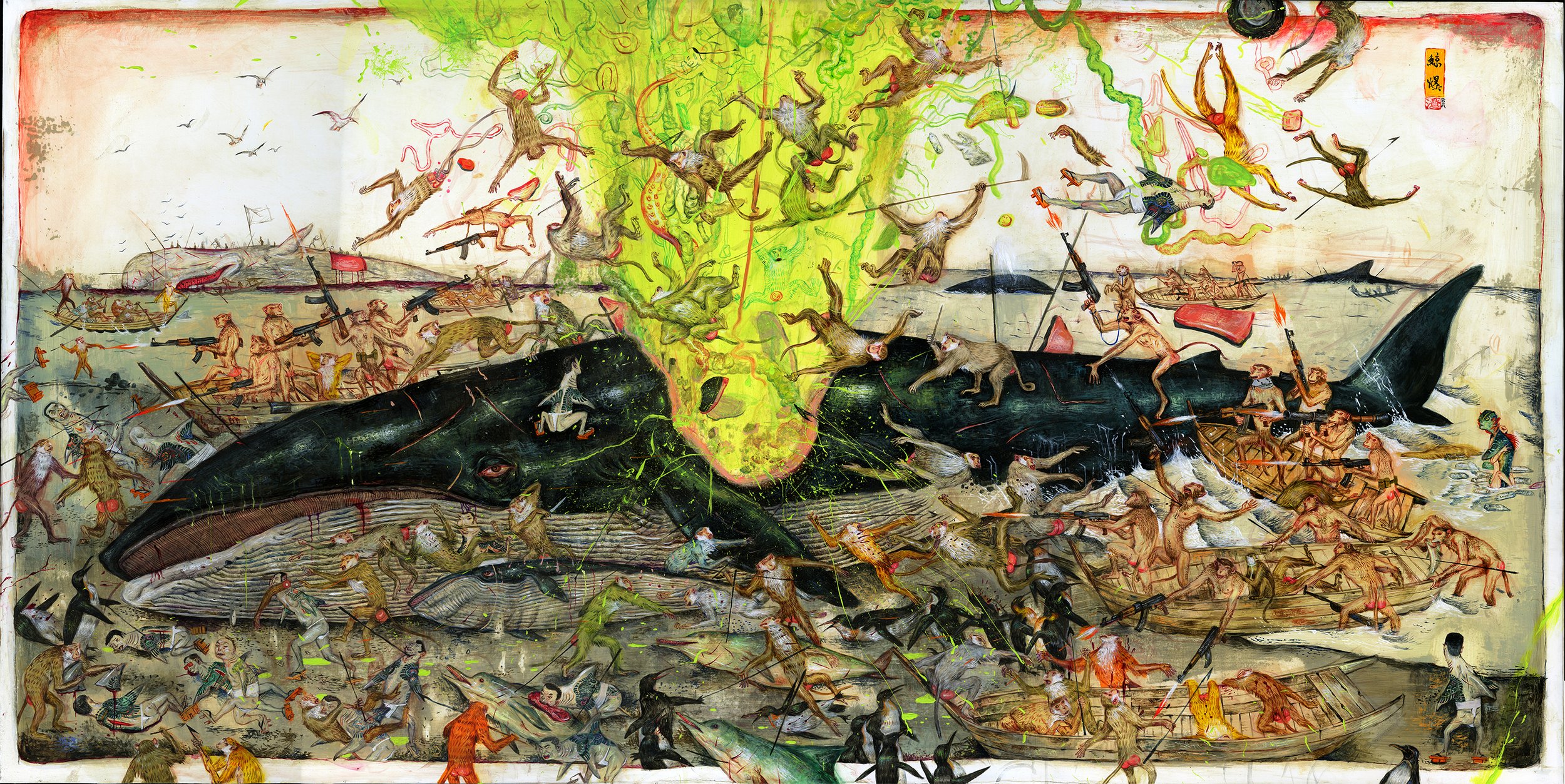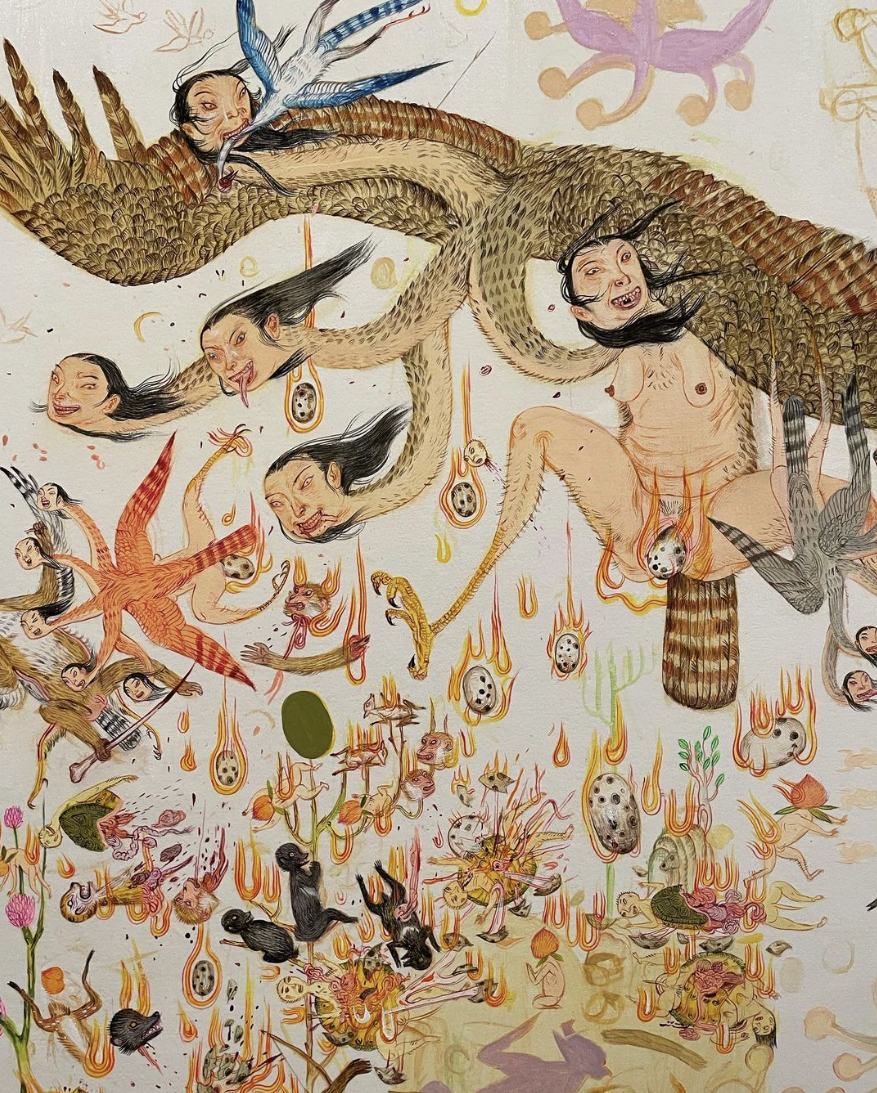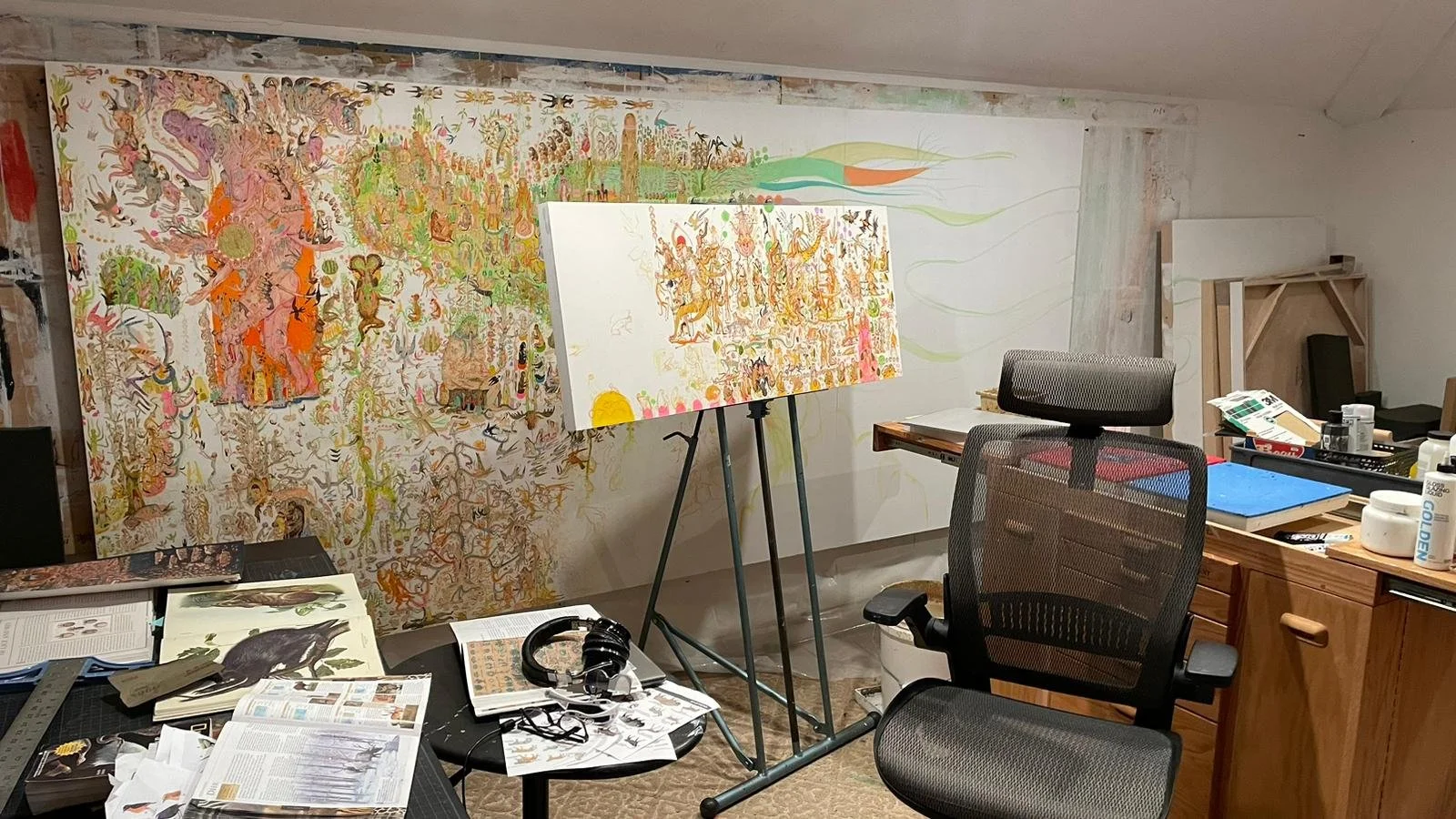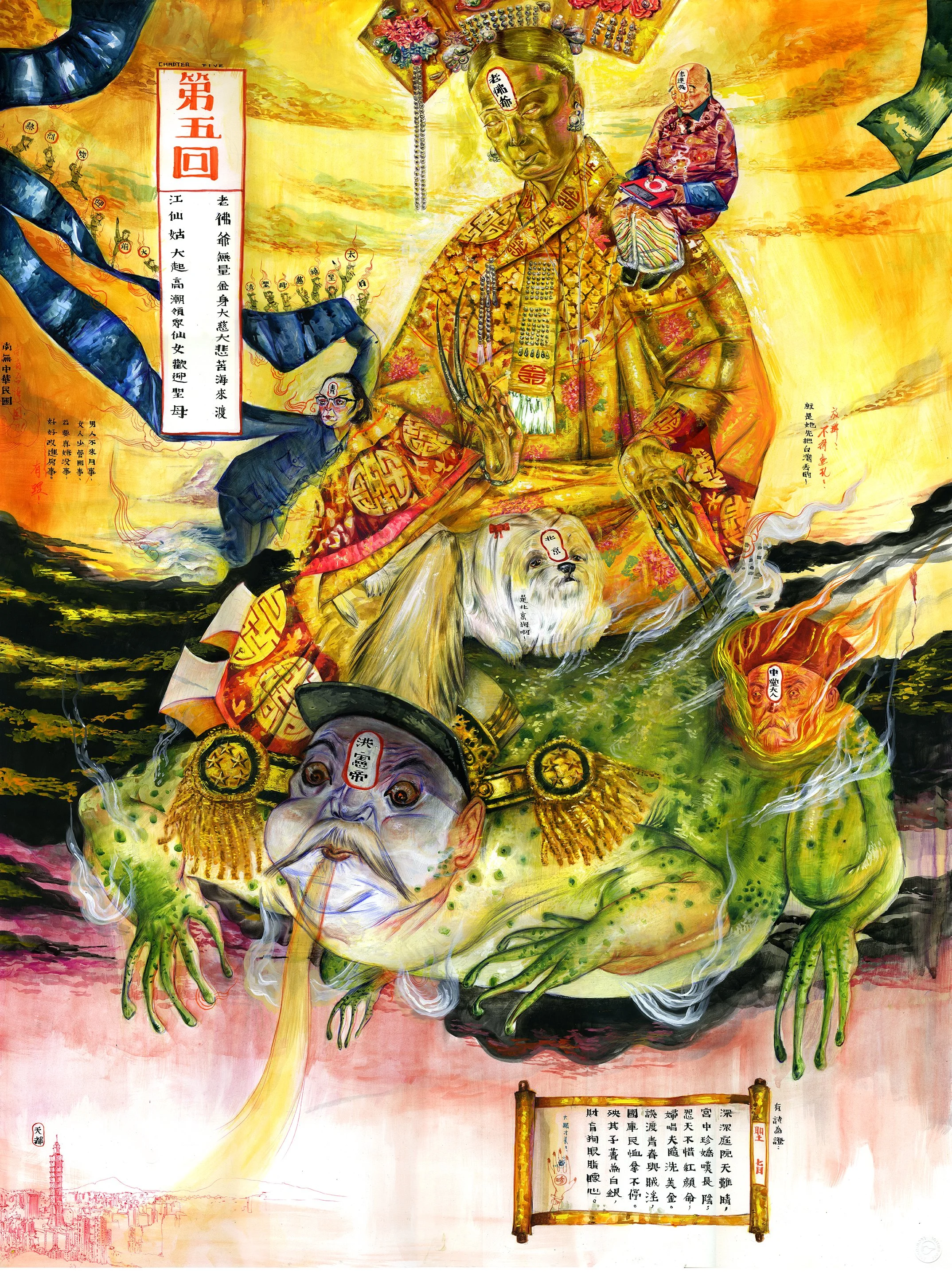A Q&A with the avant-garde artist who creates elaborate hellscapes of violence and monsters and has been featured in the horror film Midsommar.
Me Like Sushi by Mu Pan, 2015
Monkeys and human-headed crows eating sushi off a screaming woman. A multi-armed Christ shooting machine guns. A yak-headed samurai slicing a cowboy in half. Countless battles between bizarre beasts. Oh, and a creepy mural that foreshadows the dread to come in the horror flick Midsommar.
“Every monster I draw is actually a self-portrait. ”
Looking at the scope of his elaborate artworks, you notice certain themes: Mu Pan holds a cynical and misanthropic view of human nature and society. His paintings are used to express his anger and frustration with the issues he cares about, such as racism, colonialism, U.S. politics and pop culture.
Yes, if there’s one thing the artist Mu Pan isn’t afraid to be, it’s provocative.
Mu Pan’s epic-scale nightmares depict violence, gore, sex and, yes, humor. His art is like if Hieronymus Bosch and Henry Darger had a half-aborted fetus.
Rabbits by Mu Pan, 2020
He challenges viewers to confront their own prejudices and to question the narratives they’ve been told.
“Drawing and painting are for me the most obvious ways to claim justice,” Mu Pan says in his book American Fried Rice. “I use creation as a pretext to highlight everything I dislike such as violence, conflict or lies.”
When Duke and I saw Mu Pan’s work, it was love at first sight.
The artist at work
A Brief Bio of Mu Pan
The artist known as Mu Pan was born in Taichung City, Taiwan in 1976. He grew up there and emigrated to the United States with his parents in 1997. He studied at the School of Visual Arts in New York City, where he obtained a bachelor’s degree in illustration in 2001 and a master’s in illustration as visual essay in 2007. He lives and works in Brooklyn.
“Now I’m just bitter,” Mu Pan says in American Fried Rice. “I hate everybody equally. I’m not American, but I’m also not Chinese anymore. I’m glad I have both and I don’t have both.”
From the Compendium of Materia MUdica by Mu Pan, 2020
We were intrigued. So we reached out to Mu Pan to see if he’d answer some of our questions. To our surprise and delight, he obliged us.
Some of his responses are head-scratchers — but that’s part of why we’re so fascinated with him. –Wally
Detail from The Loyal Retainers Part VI: South China Sea, 2016
Q&A With Mu Pan
What influences your artwork?
Ancient art — the less sophisticated the better. Anything that has no Western influence.
I used to be so into Japanese woodblock prints, but now I don’t feel anything for them anymore.
I listen to audiobooks while I work.
When I was younger, I was influenced a lot by Louis Cha. Now I’m more into Mo Yan. Most images I make are stolen from books.
I also get influenced by Hong Kong and Japanese cinema from the ’80s and ’90s.
Whale Explosion by Mu Pan, 2018
What artists do you love?
I don’t love any living artists. I kinda hate them. Cuz they all make much more money than me and I don’t think my talent is less than theirs. They are just businesspeople. I can tell you I hate Murakami the most. And yes, I said that.
Also, I hate their fans to like my work.
My favorite dead artist is Henry Darger. When I get frustrated and depressed, I think of him, then I can keep going on.
Momlego Egg by Mu Pan, 2023
What part does folklore play in your art?
I am more into history than folklore.
Mu Pan’s Dinoasshole Chapter 1 by Mu Pan, 2016
There’s a violence to your art but also a playfulness. Can you talk about that?
My violence is cartoon. I am a very peaceful person indeed. I just have too much anger. And when I am angry at someone or something, I just purely wish the person would die in the most painful way.
And I hate being pretentious. I don’t believe that there is anyone in this world who doesn’t enjoy vengeance and violence. Our history is made of that, and even the Bible is full of violence.
I see that being fake and nice is worse than violence, and I still believe that violence is the ultimate method used to solve problems. Just look at the U.S. government — they rely on violence and power. And they are pretentious as hell.
Mu Pan’s studio. Even though there are two works in progress, he told us he can only work on one at a time.
Tell us about your process.
It really depends on how I feel. I don’t like to do small pieces, cuz I like to show off my strength that others don’t have — especially doing tiny figures on a big scale. I like to do things that people are not willing to, and I will not be submissive to anyone. You can call that stupidity, and I admit that I am stupid.
Each piece takes a long time to make, because I don’t prepare — neither do I like to make any sketches. Sketches are for products, illustrations or to feed a dumb audience. I draw as I think, and I often erase everything I did the day before.
Life is too short. Being myself is more important than making others happy.
From the series Shit History of China by Mu Pan, 2010
You were born in Taiwan and identify as Chinese. How does your heritage influence your worldview?
I am Chinese because my father is Chinese, and so was his father and his father before him.
My grandfathers fought the Japanese, and we were never colonized.
If you ask Bruce Lee if he is Chinese, he would say yes for sure — even though he was born in San Francisco and raised in Hong Kong.
I don’t give a shit about Western ideology.
Be There Soon by Mu Pan, 2023
When did you first get into drawing?
Since the first time I could make a mark on a piece of paper with a pencil.
Mu Pan created the ominous mural featured in the movie Midsommar.
Tell us about your collaboration with Ari Aster, director of Midsommar.
Ari is a cool guy. I met him when he asked me to make the opening image for Midsommar. He is very busy and I don’t get to talk to him much. But we have been friends ever since then.
I asked him for a favor to write the forward of my book.
